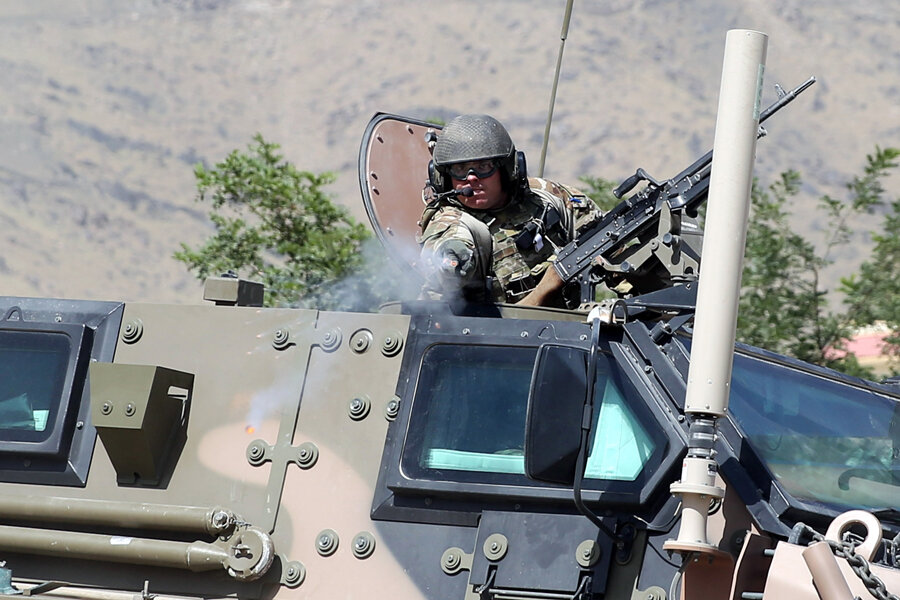Afghan military academy shooter kills US general in 'green-on-blue' attack
Loading...
A US Army general shot dead today by an Afghan soldier at a military academy is the highest-ranking US fatality in the 13-year-long war.
The major general, whose name has not been released, was shot at close range, according to the New York Times. The attack took place at Camp Qargha, an Afghan military training school outside Kabul that is modeled on Britain’s Sandhurst academy.
The Associated Press reported that 15 people were wounded in the attack, mostly US nationals. A German brigadier general was among those wounded. A spokesman for Afghanistan’s Defense Ministry told the AP that the shooter had been killed and three Afghan troops had been wounded.
Those wounded were transported by helicopter to a hospital, but their conditions remain unknown. The Afghan Defense Ministry issued a statement saying that a “few people were wounded” and that the attacker was “wearing Afghan National Army uniform." The BBC reported that the shooting apparently took place after an argument.
The number of insider attacks in Afghanistan – known as green-on-blue attacks – has fallen sharply since 2012, the AP reported. “In 2013, there were 16 deaths in 10 separate attacks. In 2012, such attacks killed 53 coalition troops in 38 separate attacks.”
As The Christian Science Monitor reported in 2013, steps were taken by both sides to limit the occurrence of such attacks on coalition troops.
“This violence is an embarrassment for both sides, it’s an issue that can create a lot of mistrust between us – and in the last months we have taken a lot of measures against this issue,” says Gen. Sher Mohammad Karimi, chief of Army staff in the Afghan military.
…
Among the measures implemented: The Afghan Army has added hundreds of counterintelligence officers to keep an eye on recruits for signs of “anti-foreigner” sentiment, soldiers returning from leave are interviewed and watched for signs of Taliban indoctrination.
…
On the coalition side, the US has implemented a “guardian angels” program under which units designate soldiers to provide security to troops who are training, overseeing, and accompanying Afghan security forces. The US has also reinforced its counterintelligence capabilities, and augmented cultural awareness training among its troops.
British-run Camp Qargha has been dubbed "Sandhurst in the sand," the Daily Telegraph reports. Afghan Army chief of staff Gen. Sher Mohammad Karimi trained at Sandhurst in the 1960s.








